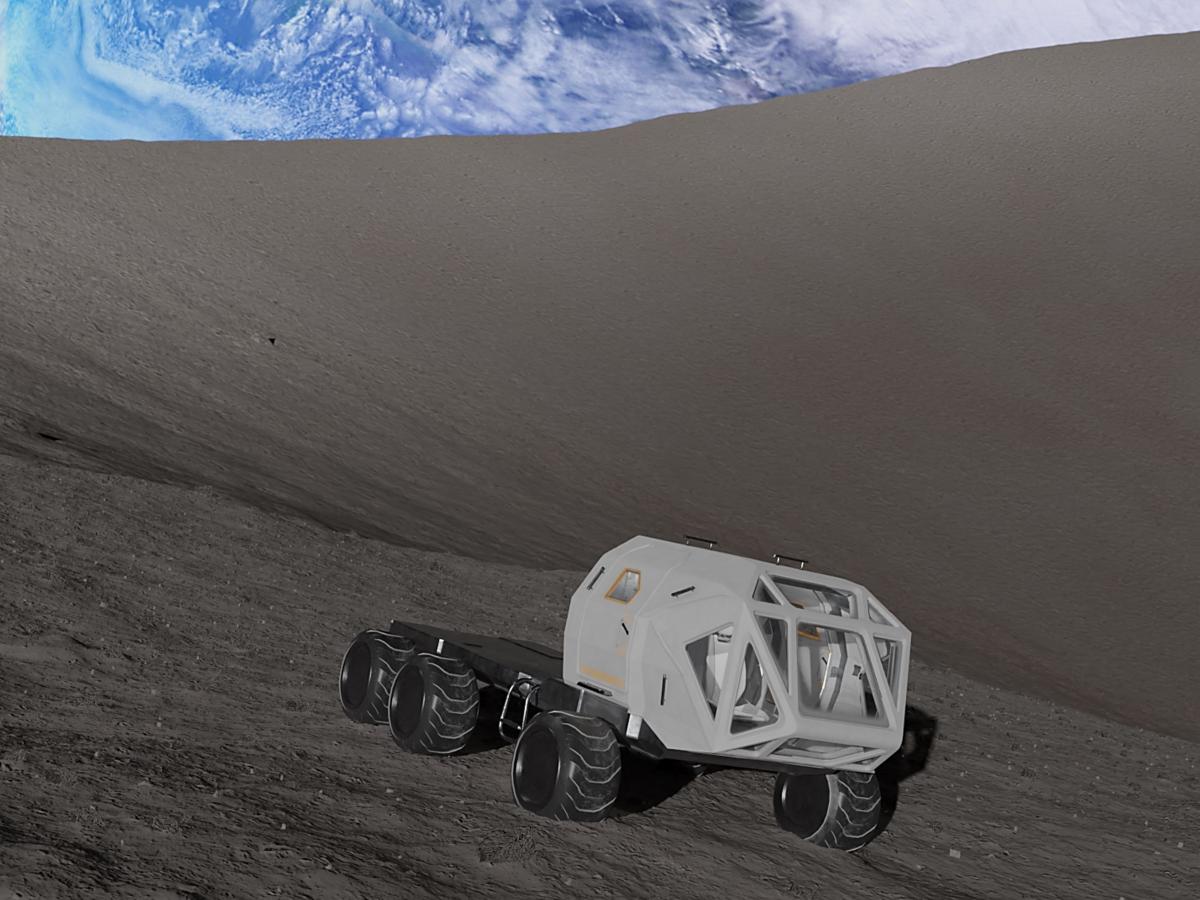Giant steps are what you take, driving on the Moon
Immersive Media program director and Head of the University of Adelaide’s Realities Extended lab, Steven Cook says futurists have always seen the potential of Virtual Reality (VR) to transform the way we learn and live, but it is only now that we are getting close to developing truly immersive VR.

“As we develop more capacity to include haptics and comprehensive sensory experiences into VR design, and as the power of VR and Artificial Intelligence (AI) converge, we are finally starting to realise the enormous potential of these technologies.” Cook says.
In its latest project, the Realities Extended lab is developing a new system that allows people to see, hear and feel what it like to drive a lunar vehicle on an accurate replica of the Moon.
The new Lunar Rover simulator is a full VR experience that drives a motion platform, while simultaneously recording the biometrics and movement analytics of the user.
Research for the project has been interdisciplinary with talented collaborators in areas such as space, education, psychology, engineering, architecture, and immersive media all involved to make it the most powerful VR experience yet.
The VR system incorporates eye-tracking and is responsive to head and neck movements, tracking user head, eye, and hand movements as they scan the environment and drive.
The VR environment has been populated with actual Moon data, so drivers traverse the terrain of Shackleton Crater and the stars above are positioned exactly where they would be.
Cook says the Lunar Rover simulator is a full VR experience that drives a motion platform, while simultaneously recording the biometrics and movement analytics of the user.
“There is a lot of excitement around this project not only for what it offers for space sector education but for its wider potential in defence and what it might deliver when applied in other contexts."Steven Cook, Head of the University of Adelaide’s Realities Extended, The University of Adelaide
“There is a lot of excitement around this project not only for what it offers for space sector education but for its wider potential in defence and what it might deliver when applied in other contexts,” Cook says.
“Modern immersive technologies, such as Virtual, Mixed and Augmented Realities, are more than simply tools to transport the user to another world.
“The accuracy of the tracking systems combined with cutting edge haptic feedback, gives us ways to record human performance data that we’ve never had before.
“As the technology matures, we can expect to see these technologies being used to train human-centred AI models and provide a method to comparatively assess performance.
“The R&D in this project has huge potential for industry adaptations, and application in a wide range of industries.
“And on top of all that, it is also really great fun.”
Features of the Lunar Rover simulation include:
- 151x151km of real Moon terrain data from the LOLA (Lunar Orbiter Laser Altimeter) dataset that was then meshed, textured, and optimised to run in 6DoF (6 Degree of Freedom) Virtual Reality.
- A fully authored and drivable electric Lunar Rover simulation, complete with wheel/surface physics and interactive volumetric controls.
- Full game-engine integration with the University of Adelaide’s Hexapod motion platform– meaning that each virtual bump, rock, and undulation can be felt.
- Tracking of the head, hands, fingers and eyes with authored analytics and biometrics systems to measure how users are interacting within the cockpit, their movements in relation to stimuli, and where they are looking during the simulation.
- Accurately mapped stars (based on the HYG catalogue) using a particle system instead of a traditional cube-mapped image.
- A tracked event and emergencies narrative system with objective-oriented missions to be carried out.
- All 3D assets and sound design generated in house.
About the University of Adelaide’s Realities Extended lab.
Realities Extended is a transformational initiative delivering cutting-edge immersive technology development and research services. Led by Senior Lecturer, Steven Cook, Realities Extended harnesses an exceptional pool of talent working at the forefront of this technology. Together with University of Adelaide research groups and key industry partners, the Realties Extended team has worked on everything from virtual tours and cutting-edge research applications, right through to surgery simulation and interactive art.
For more information on the simulator, or how to get involved, please contact the Realities Extended team via the contact portal on the website.
Media contacts:
Steven Cook, Head of the University of Adelaide’s Realities Extended, The University of Adelaide. Phone: 8313 1441. Email: steve.cook@adelaide.edu.au
Lara Pacillo, Media Officer, The University of Adelaide. Mobile: 0404 307 302. Email: lara.pacillo@adelaide.edu.au
